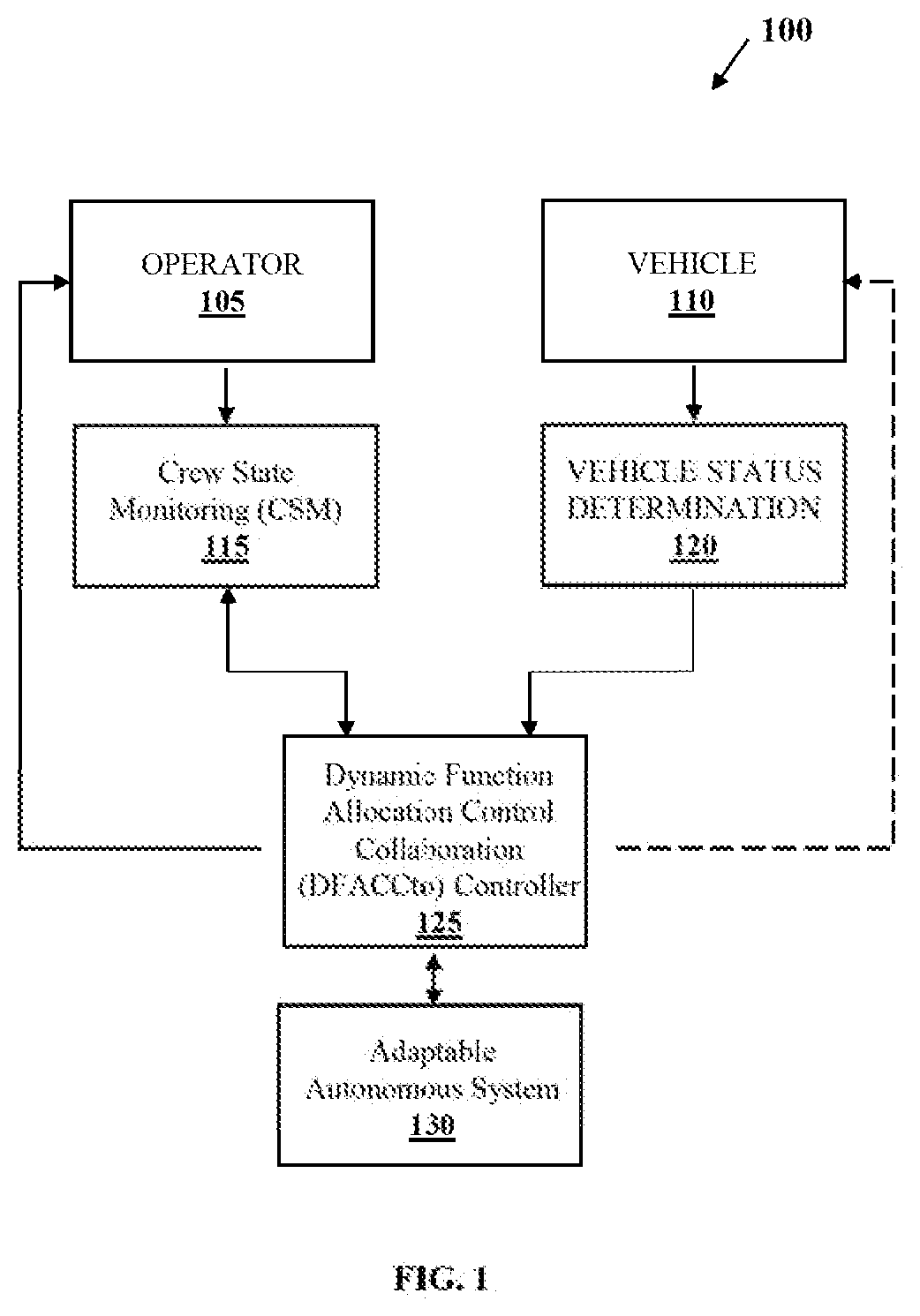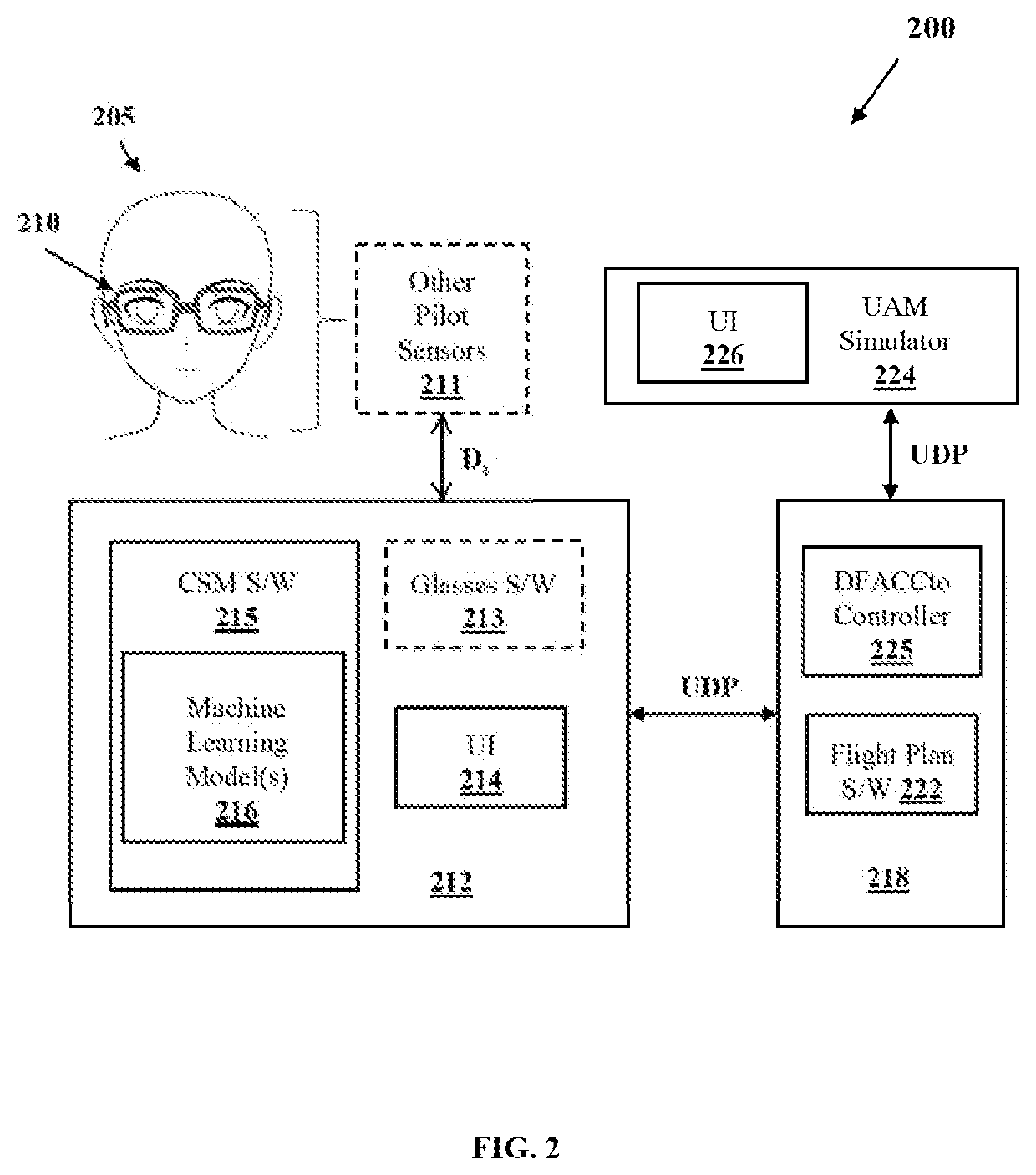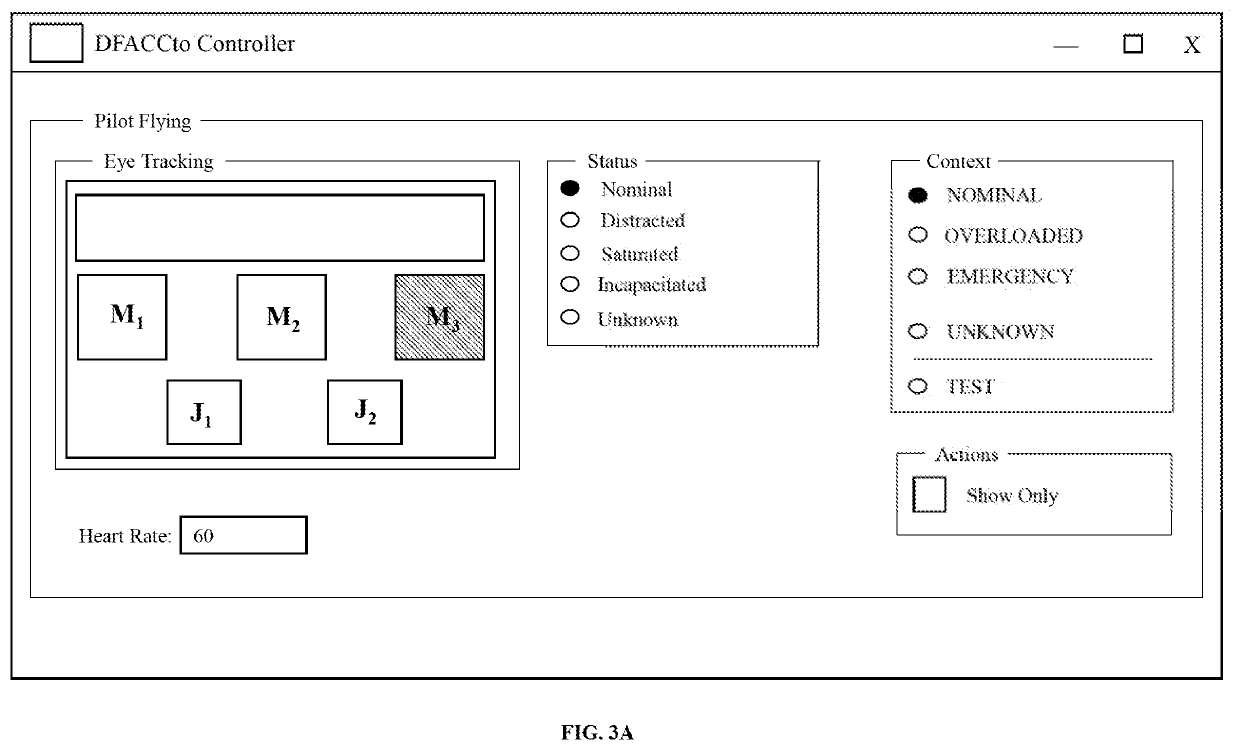Method and System for Collaborative Task-Based Allocation Between Human and Autonomous Systems
- Summary
- Abstract
- Description
- Claims
- Application Information
AI Technical Summary
Benefits of technology
Problems solved by technology
Method used
Image
Examples
first embodiment
[0062]In the first embodiment and related testing scenarios described above, the concept of inclusion of some level of intelligence or system decision-making using measured operator status of a UAM vehicle is explored. Although the embodiment described above primarily used oculometry and eye tracking as the psychophysiological sensor data for detecting pilot incapacitation, impairment or distraction, numerous other types of sensors are also useful in predicting human cognitive and / or physical conditions. By way of example, exemplary EEG devices which detect electrical neurological brain activity include: the 24-channel advance brain monitoring (ABM); the 4-channel Muse device by InteraXon; the g-Tec device by Guger and the Epoc by Emotiv. Exemplary functional near infrared spectroscopy (fNIRS) devices for optical hemodynamic brain activation detection include: Nirex by Biopac with 16 channels and frequency domain systems such as Imagent by ISS, Inc. Exemplary electrocardiogram (ECG)...
second embodiment
[0063]In a second embodiment, concepts described above are applied to the design, development, testing and evaluation of space-based vehicle simulators to enable current and future space missions, e.g., moon to Mars missions. Objectives include: evaluate, develop, and validate methods and guidelines for identifying human-automation / robot task information needs, function allocation, and team composition for future long duration, long distance space missions; develop design guidelines for effective human-automation-robotic systems in operational environments that may include distributed, non-co-located adaptive mixed-agent teams with variable transmission latencies; quantify overall human-automation-robotic system performance to inform and evaluate system designs to ensure safe and efficient space mission operations; and identify and scope the critical human-automation / robotic mission activities and tasks that are required for future long duration, long distance space missions.
[0064]F...
PUM
 Login to view more
Login to view more Abstract
Description
Claims
Application Information
 Login to view more
Login to view more - R&D Engineer
- R&D Manager
- IP Professional
- Industry Leading Data Capabilities
- Powerful AI technology
- Patent DNA Extraction
Browse by: Latest US Patents, China's latest patents, Technical Efficacy Thesaurus, Application Domain, Technology Topic.
© 2024 PatSnap. All rights reserved.Legal|Privacy policy|Modern Slavery Act Transparency Statement|Sitemap



